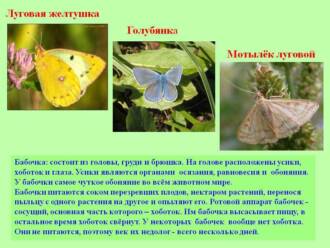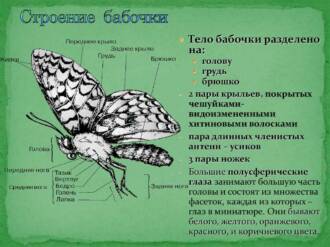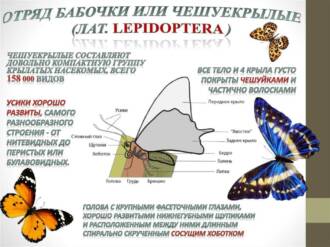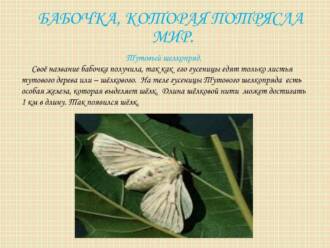
moths - These are small insects belonging to the Lepidoptera order. They attract attention with their beautiful and varied colors, as well as their smooth and elegant flight. Moths are one of the most widespread and diverse groups of insects, their number of species is estimated at several hundred thousand.
Moths have a special wing structure, which is covered with dust-like scales. Thanks to these scales, they have a peculiar brilliance and bright colors. In some species of moths, the wings can be transparent, both in the fully formed adult insect and in its caterpillar.
Moths are diverse not only in the shape and size of the wings, but also in color. Among them there are both bright and flashy species, and those whose wings are hidden in delicate pastel colors. Some species of moths are able to change the color of the wings depending on the light and ambient temperature.
Moths live in a variety of places - from tropical forests to cold tundra. They can be found in all corners of the globe except Antarctica. Some types of moths prefer to live in forests, others in open fields or swamps. Also, moths can live in the mountains or on the coast of the ocean. They are often found in gardens and parks where they find abundant food and shelter.
Description of moths and their notable features
Moths are small insects that belong to the order Lepidoptera. They are distinguished by the presence of scales on their wings, which give them a variety of colors and patterns. Moths have a light and graceful body covered with small bristles.
One notable feature of moths is their ability to fly. They can move through the air with their wings, which beat quickly and rhythmically. Some species of moths can cover considerable distances during their migrations.
Moths are also known for their camouflage abilities. They can change the color of their wings to match their environment and be invisible to predators. This allows them to survive and go unnoticed in nature.
Another interesting feature of moths is their association with colors and scents. They are often attracted to the bright colors and sweet scents of the flowers, which serve as their food source. Moths play an important role in plant pollination by carrying pollen from one flower to another.
A variety of moth species and their classification
A moth is an insect from the order Lepidoptera, which is distinguished by wings covered with small scales. There is a huge variety of moth species in the world, their description helps scientists classify them according to various characteristics.
Classification

Moths are classified according to systematics based on their morphological features and principles of evolution. The main groups of moths are family, genus, species and subspecies.
Family — This is the largest group of moths, united by common features. For example, the Nymphalidae family includes moths with large and bright wings.
Genus — is a narrower group of moths united by a common generic name. For example, the genus Papilio includes moths with long forewings.
View — is an even narrower group of moths that have common characteristics and the ability to interbreed and produce offspring. For example, the species Papilio machaon (holy moth) is one of the most famous species of moths.
Subspecies — is the smallest classification group that divides a species into geographic or morphological varieties. For example, the subspecies Papilio machaon gorganus is a subspecies of the holy grass that lives in North America.
The above classification helps scientists systematize the types of moths and study their characteristics, behavior and habitats.
Characteristics of moths and their unique adaptations
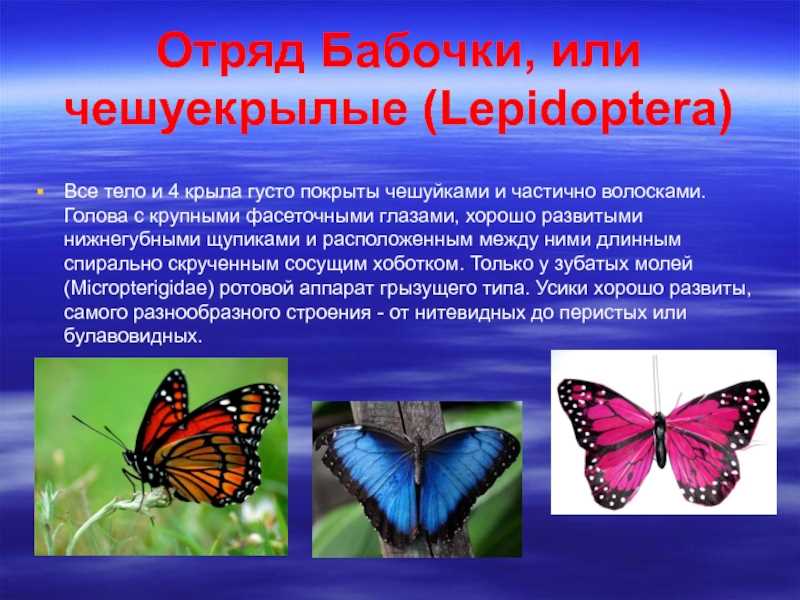
moths - This is a species of insects that belong to the Lepidoptera order. These small insects are characterized by wings covered with small scales, which give them a special beauty and variety in colors.
The description of a moth may vary depending on the species. However, the general characteristics of moths include the following features:
- Wings: Moths usually have two pairs of wings that enable them to fly. Moth wings can be of different sizes and shapes, their color can vary from delicate pastel shades to bright and rich ones.
- Life cycle: moths go through a complete life cycle that includes eggs, caterpillars, pupae and adults. Each stage has its own characteristics and adaptations that allow moths to survive and reproduce.
- Antennas: moths usually have a pair of antennae to help them navigate their environment and locate food.
The unique adaptations of moths allow them to survive in various conditions and adapt to the environment:
- Mimicry: some species of moths have the ability to mimic, that is, to take on the appearance of other insects or plants in order to hide from predators.
- Crypsis: moths can have wing coloration that allows them to blend in with their surroundings and be invisible to predators.
- Protection against predators: some species of moths may have brightly colored wings that serve as a danger signal to predators. They may also have tasty or poisonous substances in their bodies that deter predators.
In general, moths are unique insects with beautiful wings and a variety of adaptations that help them survive and reproduce in different environments.
Moth habitats and their habitat preferences
Moths are beautiful insects that live in various places around the world. Their description includes a variety of species and sizes, but they all have their own habitat preferences.
Some moths prefer to live in forested areas where a lot of vegetation and food sources are available. They are found both in trees and on the ground, exploring their environment for food and breeding partners. Other types of moths prefer to live in more open spaces, such as grasslands and fields, where they can easily move around and find their food.
Moths can also live near bodies of water such as rivers, lakes, and swamps. These places provide them with access to water and a more humid environment, which is important for their survival and reproduction. They can be on the shore of a reservoir or soar above its surface, attracting attention with their bright wings.
Some types of moths prefer to live in mountainous areas where they can find their food at altitude. They actively explore the mountain slopes, using their ease of flight and good eyesight. At the same time, other types of moths prefer to live in lower areas where the temperature and humidity are more suitable for them.
The role of moths in the ecosystem and their interaction with other organisms
A moth is an insect that belongs to the order Lepidoptera. It has wings covered with small scales, which gives it a special beauty and uniqueness. Moths are a diverse group of insects, including many species and forms. Some moths are small and inconspicuous, while others are large and brightly colored.
Moths play an important role in the ecosystem. They are an important link in the food chain, as they are a food source for many predatory insects, birds and mammals. Moths also act as pollinators, carrying pollen between plants and promoting plant reproduction. They are also food for some plants, which attract moths with their fragrant nectar substance.
Moths interact with other organisms in an ecosystem. Some types of moths develop on certain plants on which their caterpillars feed. This creates a mutually beneficial relationship between moths and plants. Moths also interact with predatory insects that prey on them. They develop various defense mechanisms such as bright coloration or the ability to eject stuffy liquid to scare away predators.
Features of reproduction and development of moths
A moth is a winged insect belonging to the Lepidoptera order. It is a small animal with scaled wings. Moths have bright colors that help them attract mates during breeding.
Reproduction of moths occurs through sexual reproduction. First, the male finds the female with the help of odors that are emitted by her pheromones. Then the male flies to the female and mates. After that, the female lays her eggs on plants, which are a food source for future caterpillars.
Caterpillars hatch from eggs - the first stage of development of a moth. Caterpillars feed on vegetation and actively grow, passing through several molts. During this period, caterpillars are the most vulnerable, as they need to constantly gain food for growth and development.
After the completion of the caterpillar phase, the transformation into a chrysalis takes place. The chrysalis is the immobile state in which metamorphosis occurs. Changes occur inside the pupa, under the influence of which the caterpillar turns into an adult moth.
After metamorphosis is completed, an adult moth hatches from the pupa. It has fully formed wings and is ready to fly. Adult moths do not live long - usually a few weeks or months. During this time, they lead an active life, searching for breeding partners and eating the nectar of flowers.
Threats and issues related to moths and their conservation
Moths are small insects with wings painted in various bright colors. They are an important part of the ecosystem and perform a number of useful functions, such as pollinating plants and serving the food chain for other animals. However, moths face a number of threats and problems that could lead to their extinction or decline in numbers.
Destruction of natural habitats
One of the main problems that moths face is the destruction of their natural habitats. Human activities such as deforestation, agricultural development, and land development are causing the loss and alteration of the moth's habitat. They lose access to food, shelter and breeding grounds, which negatively affects their numbers and species diversity.
Use of pesticides
The use of pesticides to protect crops from pests also poses a major threat to moths. Many moth species feed on plants that can be treated with pesticides. This leads to poisoning and death of insects, as well as to a reduction in the number of certain species of moths.
Changing of the climate

Global climate change is also affecting moths. Rising temperatures, changes in precipitation and other climatic factors can lead to changes in the habitat and distribution of moths. Some species of moths may not be able to cope with such changes and face the threat of extinction.
All of these threats and challenges require action to be taken to conserve moths and their habitats. It is necessary to limit the destruction and alteration of natural habitats, use more environmentally friendly agricultural practices and reduce dependence on pesticides. In addition, it is necessary to conduct research and monitor the abundance and diversity of moths in order to effectively manage their conservation and protection.
The value of moths for humans and their use in various industries

The moth is a small insect that attracts attention with its varied and colorful appearance. Many people enjoy watching moths, their easy and smooth flight, and the beauty of their wings. However, moths are not only of aesthetic value, but also important for humans in various industries.
The role of moths in the ecosystem
Moths are important plant pollinators. They carry pollen from flower to flower, facilitating the pollination process and enabling the reproduction of many plant species. Because of this, moths play an important role in the conservation of biodiversity and maintaining the health of the ecosystem.
The use of moths in scientific research
Moths are the object of study of many scientists in the field of biology and ecology. They are used in scientific research to study the mechanisms of pollination, interaction with plants, migration routes and behavioral features. These studies expand our knowledge of nature and help develop measures to conserve moths and their natural habitats.
Moths in culture and art
Moths often inspire artists, poets and designers with their colorful wings and graceful flight. They become objects for the creation of paintings, engravings, poetry and decorations. Moth motifs are used in a variety of art forms, from painting and sculpture to fashion design and interior design.
In conclusion, moths are of great importance to humans and their use is common in various industries. They are important pollinators of plants, an object of scientific research and an inspiration for artists. The maintenance of biodiversity and the conservation of moth habitats is an important task for the conservation of nature and cultural heritage.
Research methods of moths and modern scientific achievements

The study of moths is a hot topic in modern science. Scientists use various methods to study these insects and obtain new scientific data. One of the main methods is observation in the natural habitat of moths. Observation allows scientists to study the behavior and habits of moths, their habits and preferences regarding food and habitats.
To obtain more detailed information about moths, scientists also use methods for collecting and classifying specimens. They collect moths from various regions and study their structure, anatomy and physiology. Using microscopy and other instrumental methods, researchers study the smallest details of the structure of moths and their organs.
Modern scientific advances allow scientists to identify moth species based on genetic studies. Comparison of the genetic material of moths makes it possible to establish their family ties, as well as to identify evolutionary changes in their genome. This helps scientists better understand the origin and development of moths and classify them more accurately.
Another modern method of studying moths is modeling their behavior using computer programs. Scientists create virtual models of moths and study their movement, interaction with the environment and other aspects of their life. This allows scientists to gain new knowledge about the behavior of moths and apply them in various fields such as biology, ecology and technology.
Moth research methods and modern scientific advances play an important role in the understanding and conservation of these insects. They help scientists expand our knowledge of moths and their interactions with the environment, and help develop new approaches to their conservation and population management.


